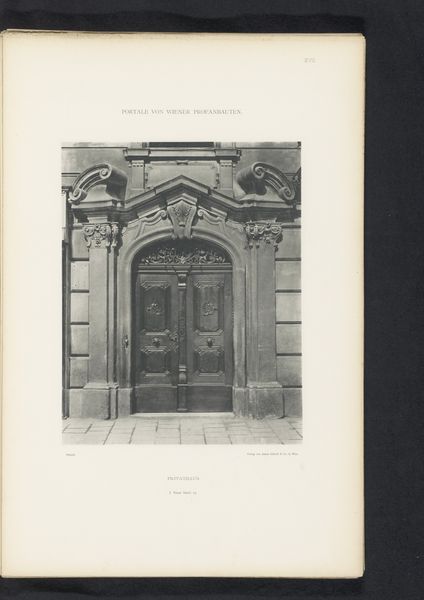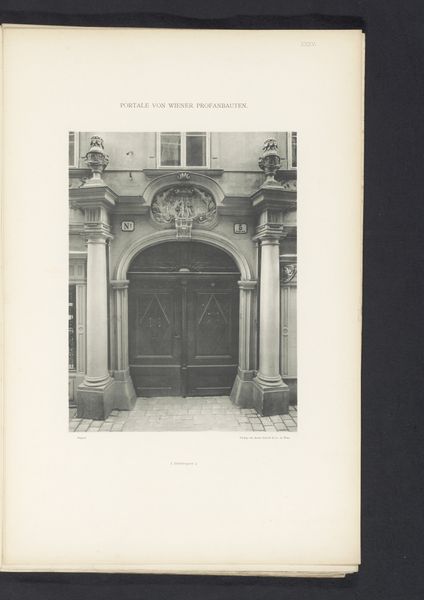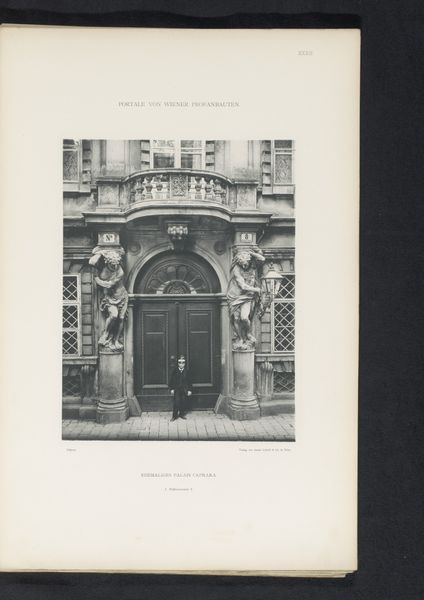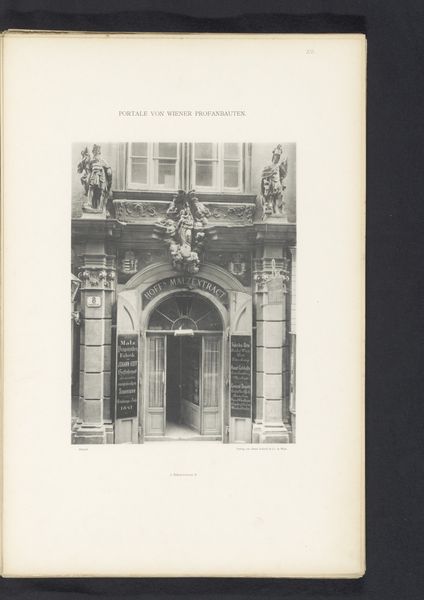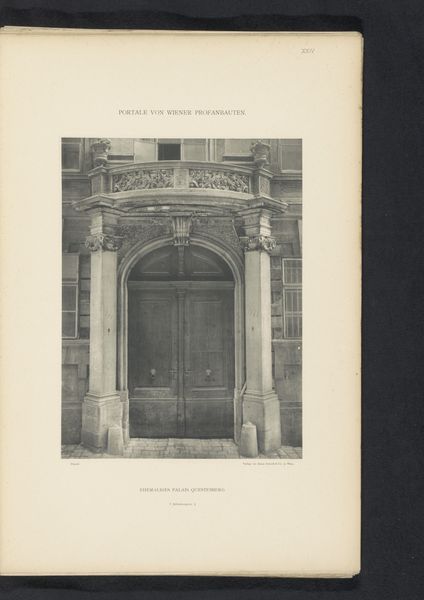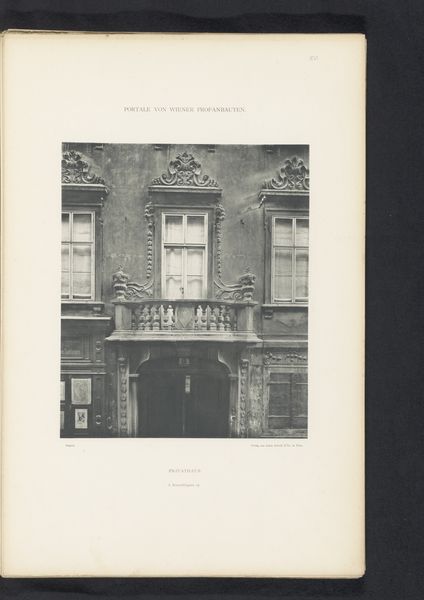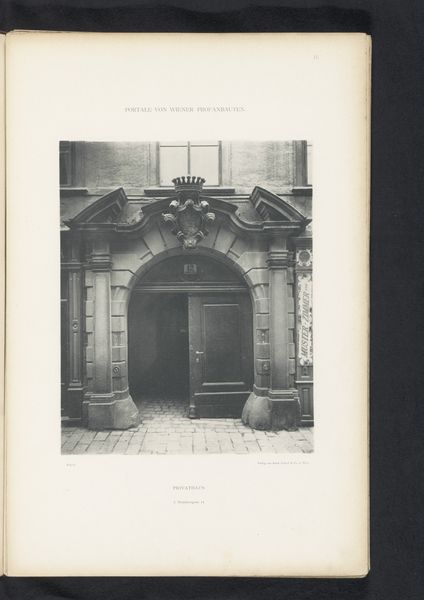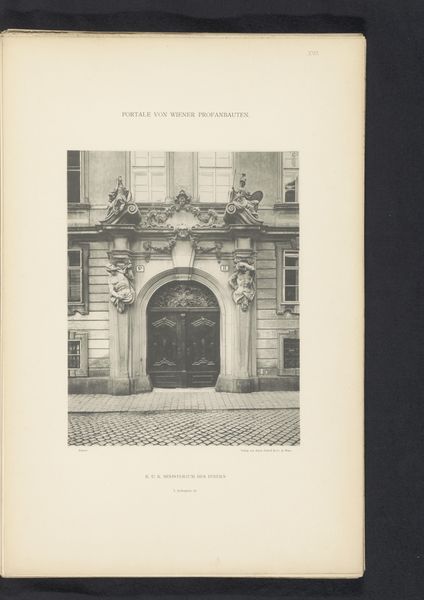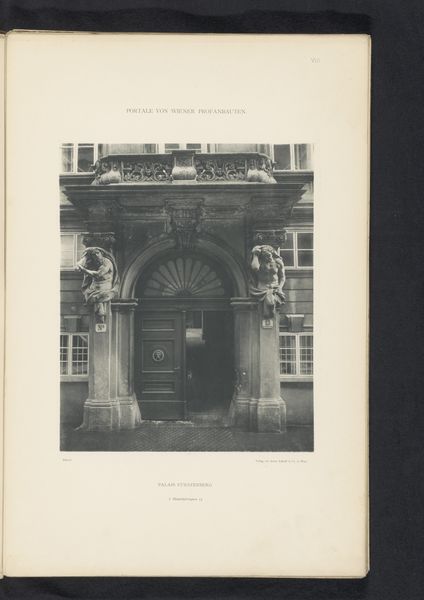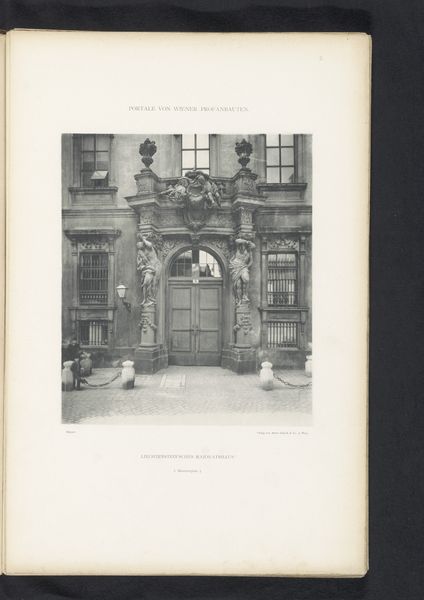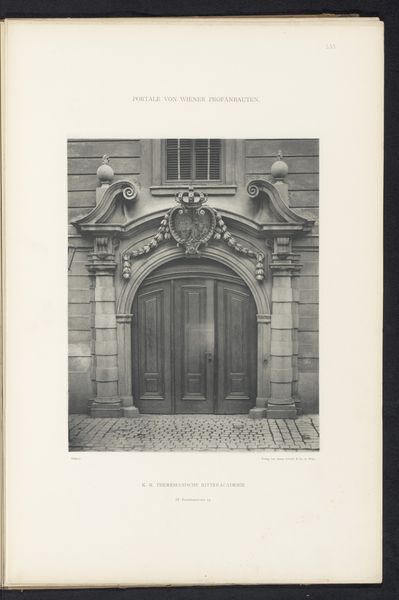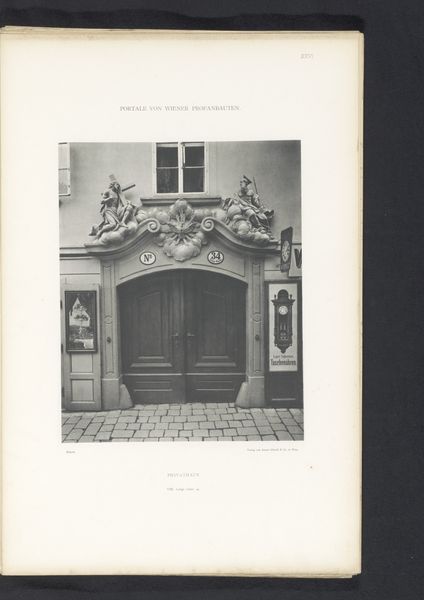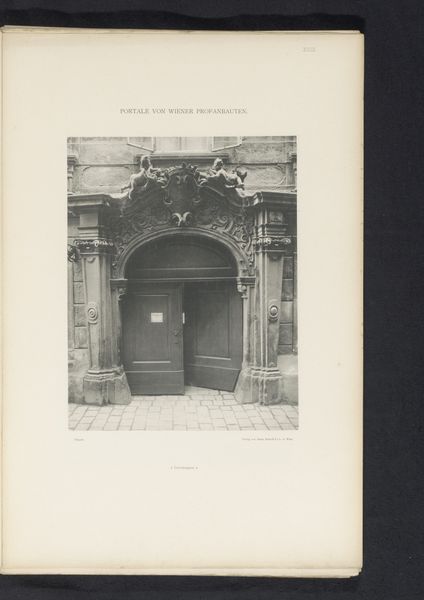
print, photography, sculpture, architecture
#
portrait
# print
#
photography
#
sculpture
#
architecture
#
building
Dimensions: height 271 mm, width 206 mm
Copyright: Rijks Museum: Open Domain
Editor: Here we have a photographic print of the "Toegangsportaal van het Erzbischöfliches Curhaus te Wenen," or the entrance portal of the Archbishop's Curhaus in Vienna, dated before 1894. The image itself feels quite formal, even imposing, with its architectural details. How do you approach a work like this? Curator: Looking at this image, I immediately think about the labor involved in its creation and reception. Consider the quarrying, transport, and carving of the stone, the carpentry involved in crafting the door itself. Then there’s the photographic process – the labor of the photographer, the printer, the very consumption of resources to produce an image of a doorway. This building represents considerable capital. What does that suggest to you? Editor: Well, seeing it from that point of view, I suppose it really highlights the hierarchical structure of society at the time. All those resources devoted to creating such an elaborate entrance clearly demonstrate power and status. Curator: Precisely. And notice how the print flattens the textures and depth. Does that impact your perception of the materials? How does the translation into a reproducible image alter the experience? Editor: It does! I lose some of that tactile sense, the feel of the stone and wood. It makes me think about how photography, as a medium, democratized art to some extent, but also commodified it in new ways. Curator: Indeed. The photograph becomes an object of consumption itself, detaching the viewer further from the original craftsmanship, yet simultaneously spreading its influence. It invites questions about accessibility and the control of representation. Editor: This has definitely changed my perspective. I went in thinking only about architecture, but now I'm thinking about labour, class, and even the social implications of image-making itself. Curator: Exactly, and understanding these layers can vastly deepen our appreciation for the cultural narratives embedded within seemingly simple images.
Comments
No comments
Be the first to comment and join the conversation on the ultimate creative platform.
